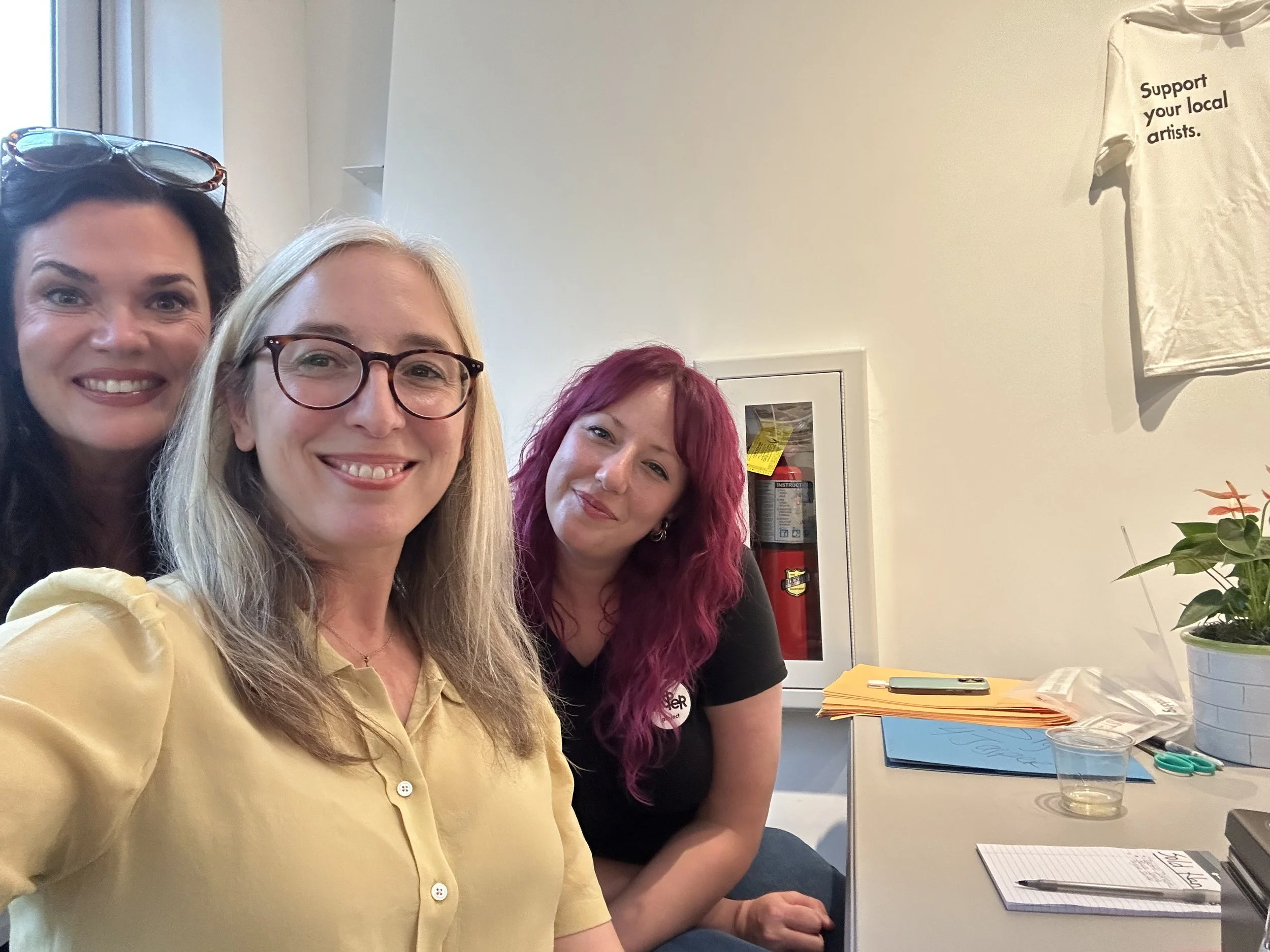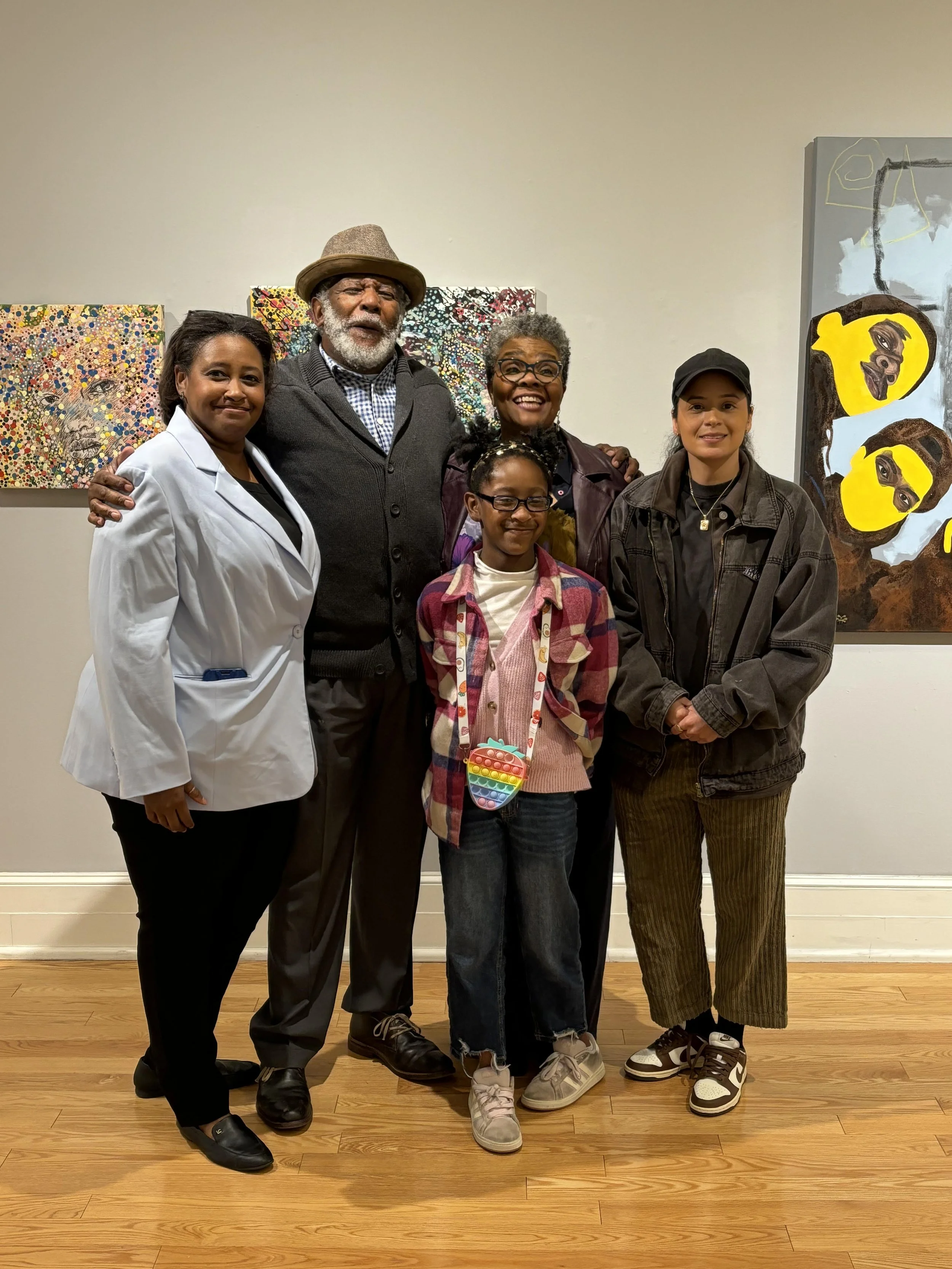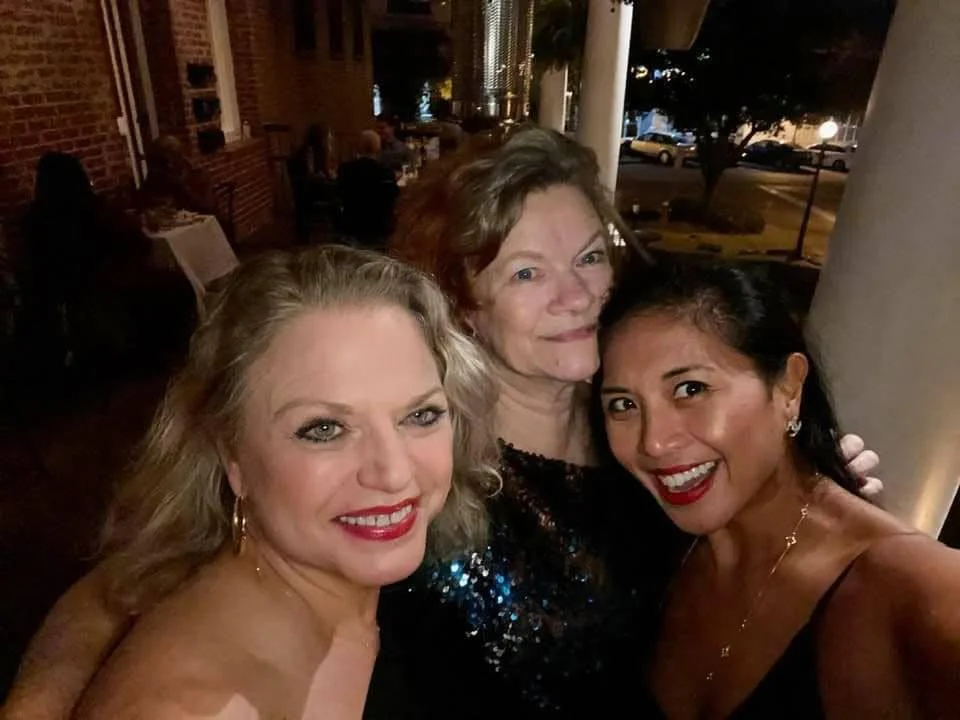Gratitude is not the only the greatest of virtues, but the parent of all the others. – Cicero
Let’s face it. There’s a lot about American Thanksgiving that is bupkis. From opposing (and propagandistic) theories of the origin story, to “traditional” dishes based on cans of Campbell’s BPA-laden soup, to little kids dodging those creepy uncles who bid them to sit on their laps after dinner, not everything about Thanksgiving is as wholesome and good as subjective history would have us believe. But science shows us over and over that being both thankful and grateful is good for our own mental health as well as the health of the relationships we foster.
To that end, I asked the Jasper Project board of directors to share the things for which they are all thankful, in their personal lives and in their lives as public servants to the arts.
I ask you now to indulge us as we share these thoughts with you.
pictured - Kristin Cobb, Meeghan Kane, and Bekah Rice
I'm so thankful for the creative minds and tender hearts that continue to make this city better, and I'm particularly grateful for the Jasper team for welcoming me with open arms. It has been such a pleasure working with these talented folks. - Meeghan Kane
I am thankful for grace. For friendships that last and those that do not. For having my parents still with me. For my children who continue to make me proud of their choices to live life on their own terms and with an open heart. For the ability to get up every day and brush my teeth, go to the gym, eat a yummy meal, and breathe. For getting to work in the arts… and manage the coolest venue…It really is all a gift. - Kristin Cobb
I’m thankful for my husband, Adam Corbett, and all the other board spouses and partners who support us and work their butts off to help out at events and the wonderful artists we have worked with this year (and previous years)! I appreciate their patience with and kindness toward our board member volunteers, and the opportunity to show their work! The Jasper board for dedicating their time and talents and working so hard to make everything we do happen. I'm excited for the new folks we have joining next year as well and can't wait to see how much we accomplish! - Bekah Rice
pictured - Keith Tolen with family & friends
I’m thankful this year and every year for being a part of this amazing arts community that continues to thrive and contribute to our culture with generous positive energy. I am also grateful to be a part of the Jasper Family! - Keith Tolen
I’m thankful for creativity - the soul of connection and overcoming differences. - Pam Bowers
I’m thankful for the new, young creative talent that is making Columbia a brighter city to live and create in. - Wade Sellers
pictured - Dick Moons leading a drum session at Jasper’s Degenerate Arts project, June 2025
I am thankful for living in a place that has such a vibrant, diverse & active arts community. I am constantly amazed & grateful for the wealth of talent in this relatively small city. I don't think many of our citizens realize just how fortunate we are. I'm also thankful for my kids, my beautiful friends and for still being here to appreciate it. - Dick Moons
I am thankful for family and friends. I’m also thankful for the opportunity to share my ideas with the world. - Kwasi Brown
Fish for Thought by Emily Moffitt
I am thankful for my dear friends, family, and my partner-in-crime Dylan! I am also extremely grateful for all of the artists who have allowed me to work with them at Koger or through the Jasper Project. It makes me very happy to think about how we are all improving and contributing to the arts here in Columbia. - Emily Moffitt
pictured - Stan Conine
At this point in my life, I realize how thankful I am for my families (plural): Of course the really close biological one that calls me “Stanley” or ”Dad” or ”Pops.” But also my close family of Vista neighbors and friends who sometimes call me “(censored).” Or just call me. And I am especially thankful for my family of artists and fellow art lovers who helped me realize that I’m not just an art lover, I am also an “artists lover.” - Stan Conine
I have accidentally contrived the perfect retirement, having surrounded myself with visual, graphic, musical, literary, theatrical and other kinds of artists and can proudly count them as my friends. These are the rewards of a lifetime. I was worried I'd spend my dotage playing pickleball and watching reruns of Barney Miller until I was dead. Instead, I get to write and listen to and watch and celebrate the artists with whom I cross paths on a regular basis. Barney Miller is great and all, but it can wait awhile. Oh: family and food. Those things matter too. Perhaps I take them for granted because they've always been there, which is more than enough to fill a fella's heart. - Jon Tuttle
pictured - Libby Campbell with members of her beloved “thruple” - Becky Hunter and Ellen Rodillo-Fowler
I’m thankful to live in a community which has such a thriving arts community; my closest friendships have evolved from that community. I’m also thankful for the bunch of weirdos who make up the Jasper Board and for Cindi & the good Doc who see that a light shines on Midlands artists who might otherwise not be recognized. And ambrosia. - Libby Campbell
pictured - Cindi’s grand-monkeys
Among the many things I’m thankful for, including family and friends and my home at Muddy Ford, I’m also thankful for the talented and committed friends who serve on the Jasper Project board of directors. We have a magazine and a film project and a playwright project and SIX galleries because these devoted people give their time, energy, and talent to a dream I had almost 15 years ago – and they’ve kept that dream alive! I’m also especially thankful this year for the newest member of our family, our fur-baby Jane. And, of course, my grand-monkeys, Sarge and Bobby. - Cindi Boiter
pictured - Janie enjoying my favorite Thanksgiving tradition - the nap!



























